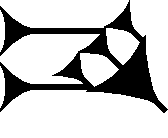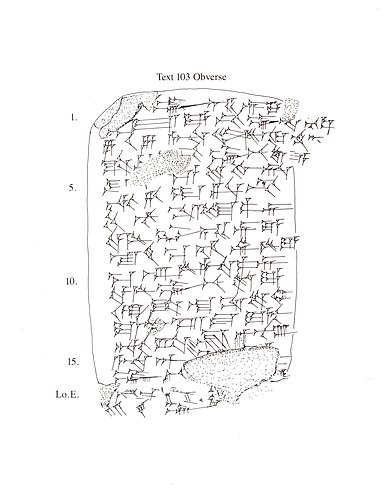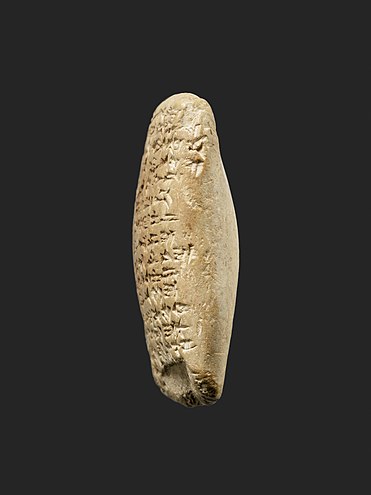
(digitized form am, and other meanings)

A common Amarna letter that uses cuneiform am.
(Next-to-last cuneiform sign, line 3.)
The cuneiform sign am, is a common-use sign of the Amarna letters, the Epic of Gilgamesh, and other cuneiform texts (for example Hittite texts). It is also used as AM.
Linguistically, it has the alphabetical usage in texts for a, or m, or syllabically for am. The "a" is replaceable in word formation by any of the 4 vowels: a, e, i, or u.
Epic of Gilgamesh usage
The am sign usage in the Epic of Gilgamesh is as follows: am-(87 times); AM-(4).
References
- Parpola, 1971. The Standard Babylonian Epic of Gilgamesh, Sign List, pp. 155-165, no. 170, p. 158, "am".
- Moran, William L. 1987, 1992. The Amarna Letters. Johns Hopkins University Press, 1987, 1992. 393 pages.(softcover, ISBN 0-8018-6715-0)
- Parpola, 1971. The Standard Babylonian Epic of Gilgamesh, Parpola, Simo, Neo-Assyrian Text Corpus Project, c 1997, Tablet I thru Tablet XII, Index of Names, Sign List, and Glossary-(pp. 119–145), 165 pages.
-
 line drawing, Obverse
line drawing, Obverse
Amarna letter EA 15-(titled: "Assyria joins the International Scene").
A common Amarna letter that uses cuneiform am.
(Next-to-last cuneiform sign, line 3.) -
 Right Edge (Obverse) showing
Right Edge (Obverse) showing
am, 3rd line from top.
( am-qut, for "maqātu",
"to bow down", etc.; to address someone )